Ore Mineralogy, Trace Element Geochemistry and Geochronological Constraints at the Mollehuaca and San Juan de Chorunga Au-Ag Vein Deposits in the Nazca-Ocoña Metallogenic Belt, Arequipa, Peru
Abstract
1. Introduction
2. Geological Setting
3. Samples and Methods
3.1. Petrography
3.2. Whole-Rock Geochemistry of the Veins and Statistical Analysis
3.3. Scanning Electron Microscopy
3.4. Electron Microprobe Analysis
3.5. Geochronological Analysis
4. Petrography
4.1. Host Rock
4.2. Quartz Veins
4.3. Ore Minerals
4.3.1. Au-Ag Bearing Minerals
4.3.2. Pyrite
4.3.3. Chalcopyrite
4.3.4. Sphalerite
4.3.5. Arsenopyrite
4.3.6. Galena
4.3.7. Bismuth-Bearing Minerals
4.3.8. Coloradoite
4.3.9. Iron Oxyhydroxides
4.4. Paragenetic Sequence
4.5. Whole Vein Geochemistry
5. Trace Elements Geochemistry and Texture of Zircon
6. Geochronological Data
7. Discussion
7.1. Ore mineralization
7.2. Zircon Texture and Geochemistry
7.3. Nazca-Ocoña Belt Age
7.4. Environmental Considerations
8. Conclusions
Supplementary Materials
Author Contributions
Funding
Acknowledgments
Conflicts of Interest
References
- Hilson, G.; Maconachie, R. Formalising artisanal and small-scale mining: Insights, contestations and clarifications. Area 2017, 49, 443–451. [Google Scholar] [CrossRef]
- Sousa, R.N.; Veiga, M.M.; Klein, B.; Telmer, K.; Gunson, A.J.; Bernaudat, L. Strategies for reducing the environmental impact of reprocessing mercury-contaminated tailings in the artisanal and small-scale gold mining sector: Insights from Tapajos River Basin, Brazil. J. Clean. Prod. 2010, 18, 1757–1766. [Google Scholar] [CrossRef]
- Stocklin-Weinberg, R.; Veiga, M.M.; Marshall, B.G. Training artisanal miners: A proposed framework with performance evaluation indicators. Sci. Total Environ. 2019, 660, 1533–1541. [Google Scholar] [CrossRef] [PubMed]
- Acosta, J. Características metalogenéticas de los yacimientos asociados a los arcos magmáticos mesozoicos y cenozoicos del sur del Perú. In Informe Técnico Interno DGEPM; INGEMMET: Lima, Peru, 2006; pp. 20–26. [Google Scholar]
- Acosta, J.; Quispe, J.; Santiesteban, A.; Acosta, H. Épocas metalogenéticas y tipos de yacimientos metálicos en la margen occidental del Sur del Perú: Latitudes 14° S–18° S. In Proceedings of the Resúmenes Extendidos XIV Congreso Peruano de Geología, Lima, Peru, 20 Septiembre–3 October 2008. [Google Scholar]
- Acosta, J.; Rivera, R.; Valencia, M.; Chirif, H.; Huancacuni, D.; Rodriguex, I.; Villareal, E.; Paico, D.; Santiesteban, A. Mapa Metalogenético del Perú 2009. Informe Técnico; INGEMMET: Lima, Peru, 2009. [Google Scholar]
- Acosta, J.; Santiesteban, A.; Huanacuni, D.; Valencia, M.; Villareal, E. Producción de Oro y Plata en el Perú: Pasado, Presente y Futuro. In Proceedings of the 11th Simposium del Oro y la Plata, Lima, Peru, 20–23 May 2014. [Google Scholar]
- Boekhout, F.; Sempéré, T.; Spikings, R.; Schaltegger, U. Late Paleozoic to Jurassic chronostratigraphy of coastal southern Perú: Temporal evolution of sedimentation along an active margin. J. S. Am. Earth Sci. 2013, 47, 179–200. [Google Scholar] [CrossRef]
- Agar, R. Copper mineralization and magmatic hydrothermal brines in the Rio Pisco section of the Peruvian Coastal Batholith. Econ. Geol. 1981, 76, 677–693. [Google Scholar] [CrossRef]
- Pitcher, W. The anatomy of a batholith. Geol. Soc. Lond. J. 1978, 135, 157–180. [Google Scholar] [CrossRef]
- Mukasa, S.B. Zircon U-Pb ages of super-units in the Coastal batholith, Perú: Implications for magmatic and tectonic processes. Geol. Soc. Am. Bull. 1986, 97, 241–254. [Google Scholar] [CrossRef]
- Cobbing, E.J.; Ozard, J.M.; Snelling, N.J. Reconnaissance geochronology of the crystalline basement rocks of the Coastal Cordillera of southern Perú. Geol. Soc. Am. Bull. 1977, 88, 241–246. [Google Scholar] [CrossRef]
- Pitcher, W.; Atherton, M.; Cobbing, E.; Beckinsale, R. Magmatismo en el borde de una placa, Los Andes Peruanos. Brit. Geol. Surv. 1985, 359. [Google Scholar]
- Watson, E.B.; Wark, D.A.; Thomas, J.B. Crystallization thermometers for zircon and rutile. Contrib. Miner. Petr. 2006, 151, 413. [Google Scholar] [CrossRef]
- McIntosh, W.C.; Heizler, M.; Peters, L.; Esser, R. 40Ar/39Ar geochronology at the New Mexico Bureau of Geology and Mineral Resources; New Mexico Bureau of Geology: Socorro, New Mexico, 2003; Open File Report OF-AR-1; p. 10. [Google Scholar]
- Alfonso, P.; Anticoi, H.; Yubero, T.; Bascompta, M.; Henao, L.; Garcia-Valles, M.; Yáñez, J. The importance of mineralogical knowledge in the sustainability of artisanal gold mining: A mid-south Perú case. Minerals 2019, 9, 345. [Google Scholar] [CrossRef]
- Bouzari, F.; Hart, C.J.R. Assessing British Columbia porphyry fertility using zircons. In Geoscience BCSummary of Activities; Report 2019-1; Minerals and Mining, Geoscience BC: Vancouver, BC, USA, 2018. [Google Scholar]
- Lu, Y.J.; Loucks, R.R.; Fiorentini, M.L.; McCuaig, T.C.; Evans, N.J.; Yang, Z.M.; Hou, Z.Q.; Kirkland, C.L.; Parra-Avila, L.A.; Kobussen, A. Zircon compositions as a pathfinder for porphyry Cu ± Mo ± Au mineral deposits. Econ. Geol. 2016, 19, 329–347. [Google Scholar]
- Sillitoe, R.H.; Thompson, J.F. Intrusion–Related Vein Gold Deposits: Types, Tectono-Magmatic Settings and Difficulties of Distinction from Orogenic Gold Deposits. Resour. Geol. 1998, 48, 237–250. [Google Scholar] [CrossRef]
- De Montreuil, L. Ocurrencia de oro y sus asociaciones mineralógicas en la faja aurífera Nazca-Ocoña. In Programa Científico Cultural; INGEMMET: Lima, Peru, 1979; pp. 25–48. [Google Scholar]
- De Montreuil, L. Mineralogía de los yacimientos auríferos en el Perú. Resumen extendido. In Proceedings of the II Simposium Internacional del Oro, Lima, Peru, 7–10 May 1996; pp. 307–343. [Google Scholar]
- Cardozo, M.; Cedillo, E. Geologic-metallogenetic evolution of the Peruvian Andes. In Stratabound ore Deposits in the Andes; Springer: Berlin/Heidelberg, Germany, 1990; pp. 37–60. [Google Scholar]
- Acosta, J.; Quispe, J.; Rivera, R.; Valencia, M.; Chirif, H.; Huanacuni, D.; Rodríguez, I.; Villarreal, E.; Paico, D.; Santisteban, A. Mapa Metalogenético del Oro en el Perú; INGEMET: Lima, Peru, 2010. [Google Scholar]
- Palacios, S.; Alfonso, P.; Mata-Perello, J.M. Caracterización del Yacimiento de Oro de Misky, Sur del Perú. Macla 2011, 15, 159–160. [Google Scholar]
- Schreiber, D.W.; Amstutz, G.C.; Fontboté, L. The formation of auriferous quartz-sulfide veins in the Pataz region, northern Peru: A synthesis of geological, mineralogical, and geochemical data. Miner. Depos. 1990, 25, 136–140. [Google Scholar] [CrossRef]
- Haeberlin, Y.; Moritz, R.; Fontboté, L.; Cosca, M. Carboniferous orogenic gold deposits at Pataz, Eastern Andean Cordillera, Peru: Geological and structural framework, paragenesis, alteration, and 40Ar/39Ar geochronology. Econ. Geol. 2004, 99, 73–112. [Google Scholar] [CrossRef]
- Voute, F.; Hagemann, S.G.; Evans, N.J. Sulfur isotopes, trace element, and textural analyses of pyrite, arsenopyrite and base metal sulfides associated with gold mineralization in the Pataz-Parcoy district, Peru: Implication for paragenesis, fluid source, and gold deposition mechanisms. Miner. Depos. 2019, 54, 1077–1100. [Google Scholar] [CrossRef]
- Sillitoe, R.H. Exploration and discovery of base and precious metal deposits in the circum Pacific region during the last 25 years. Resour. Geol. Spec. Issue 1995, 19, 119. [Google Scholar]
- Sillitoe, R.H. Exploration and discovery of base and precious metal deposits in the circum Pacific region a late 1990s update. Resour. Geol. 2000, 21, 65. [Google Scholar]
- Loader, M.A.; Wilkinson, J.J.; Armstrong, R.N. The effect of titanite crystallization on Eu and Ce anomalies in zircon and its implications for the assessment of porphyry Cu deposit fertility. Earth Planet. Sci. Lett. 2017, 472, 107–119. [Google Scholar] [CrossRef]
- Geocatmin-Ingemmet Database. Available online: https://geocatmin.ingemmet.gob.pe/geocatmin/ (accessed on 3 August 2020).
- Schildgen, T.F.; Ehlers, T.A.; Whipp, D.M.; Van Soest, M.C.; Whipple, K.X.; Hodges, K.V. Quantifying canyon incision and Andean Plateau surface uplift, southwest Perú: A thermochronometer and numerical modeling approach. J. Geophys. Res. Earth 2009, 114, F4. [Google Scholar] [CrossRef]
- Loredo, J.; Soto, J.; Ordonez, A.; Alvarez, R. Mercury and arsenic pollution associated to artisanal gold mining in Huanca (Ayacucho Department, Perú). Fresen. Environ. Bull. 2009, 18, 391–398. [Google Scholar]
- Gibb, H.; O’Leary, K.G. Mercury exposure and health impacts among individuals in the artisanal and small-scale gold mining community: A comprehensive review. Environ. Health Persp. 2014, 122, 667–672. [Google Scholar] [CrossRef]
- Esdaile, L.; Chalker, J.M. The Mercury Problem in Artisanal and Small-Scale Gold Mining. Chem. Eur. J. 2018, 24, 6905–6916. [Google Scholar] [CrossRef] [PubMed]
- Plumlee, G.S. The environmental geology of mineral deposits. The environmental geochemistry of mineral deposits. Part A: Processes, techniques and health issues. Econ. Geol. 1999, 6A, 71–116. [Google Scholar]
- Lottermoser, B.G. Sulfidic mine wastes. In Mine Wastes; Springer: Berlin/Heidelberg, Germany, 2010; pp. 43–117. [Google Scholar]
- Plumlee, G.S.; Smith, K.S.; Montour, M.R.; Ficklin, W.H.; Mosier, E.L. Geologic controls on the composition of natural waters and mine waters draining diverse mineral-deposit types. The environmental geochemistry of mineral deposits. Econ. Geol. 1999, 6, 373–432. [Google Scholar]

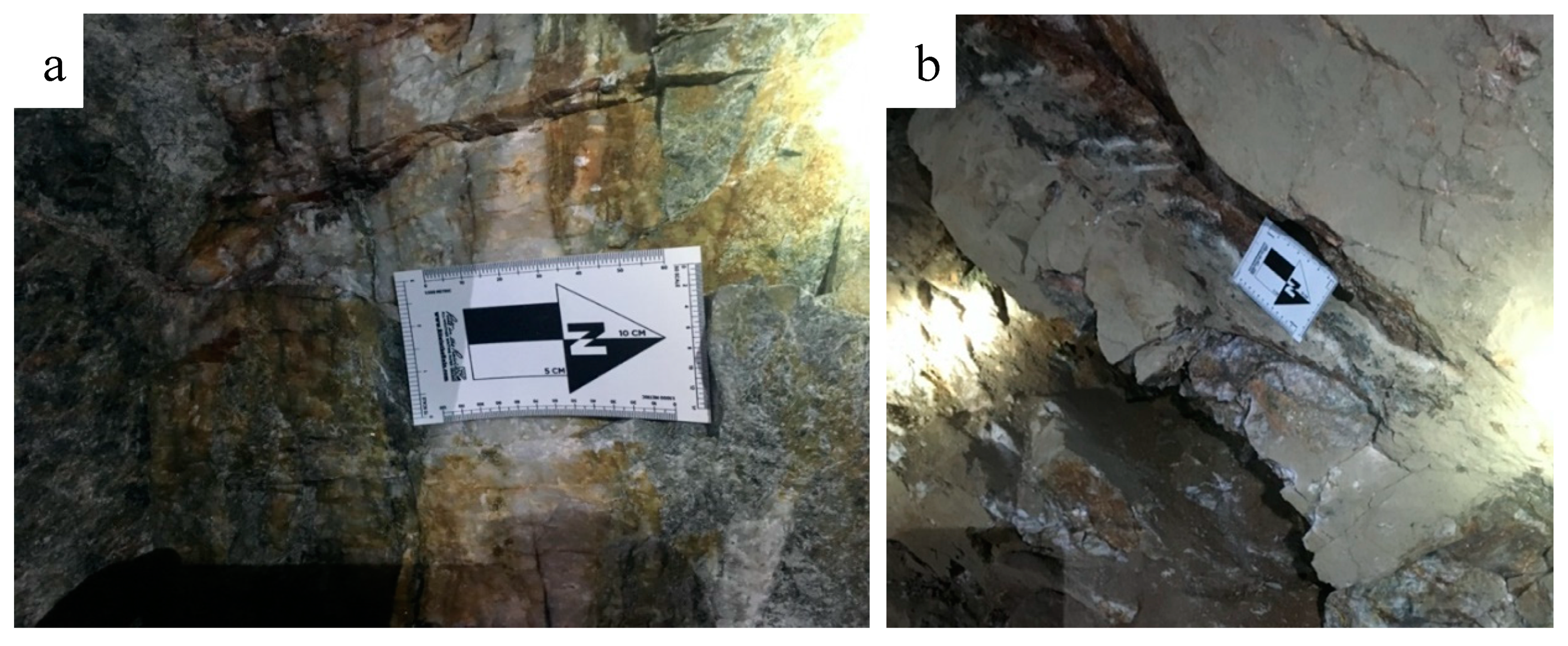

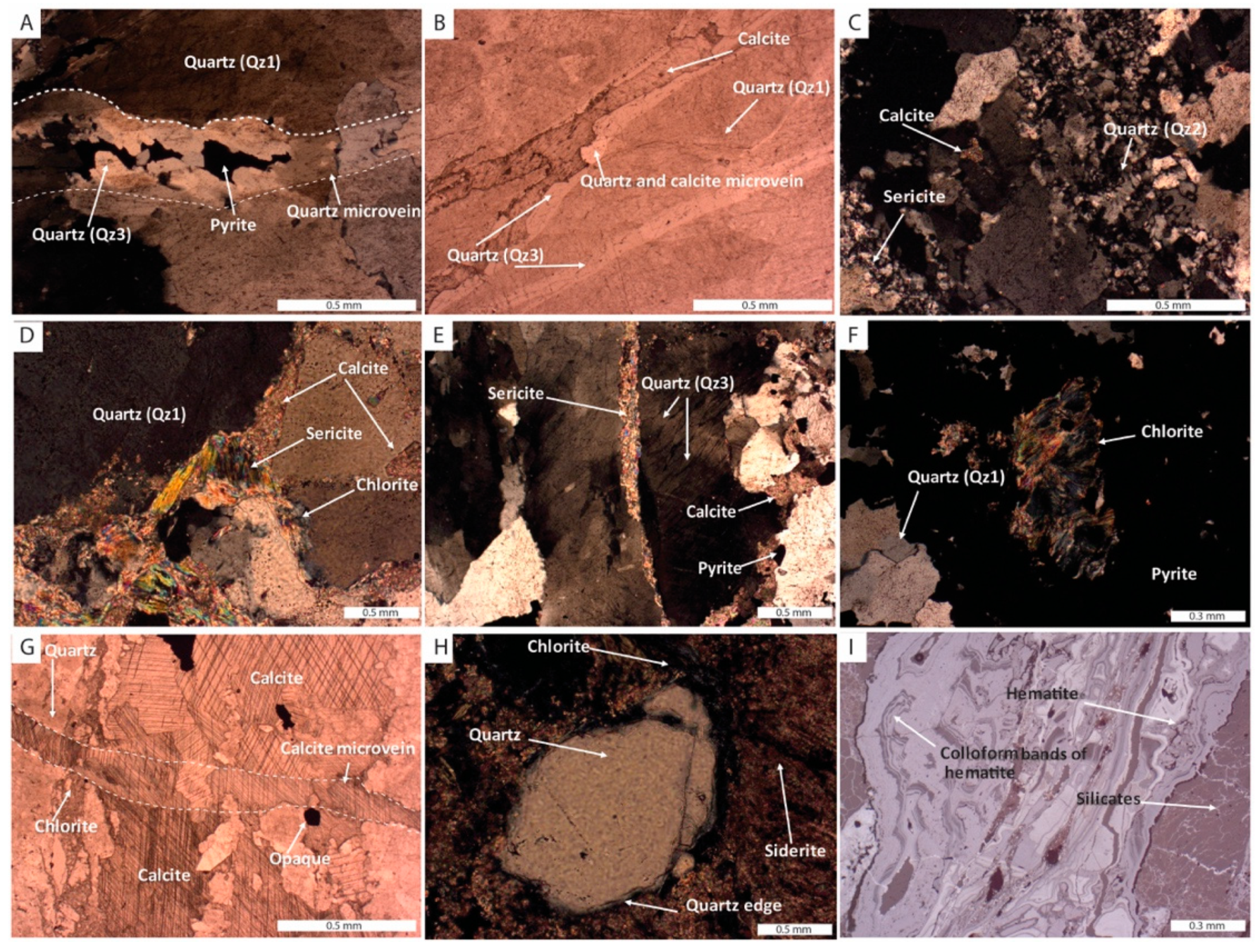

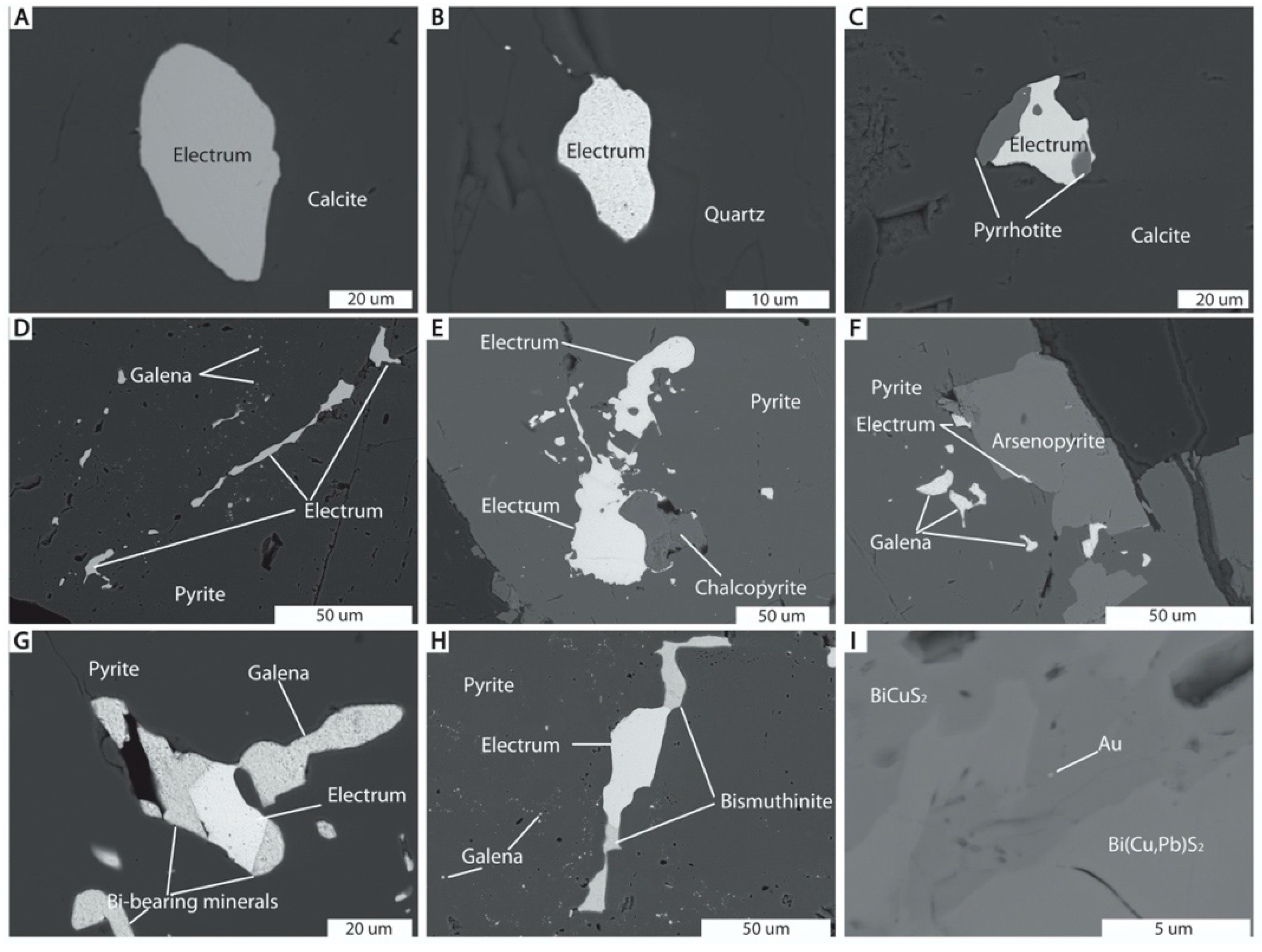
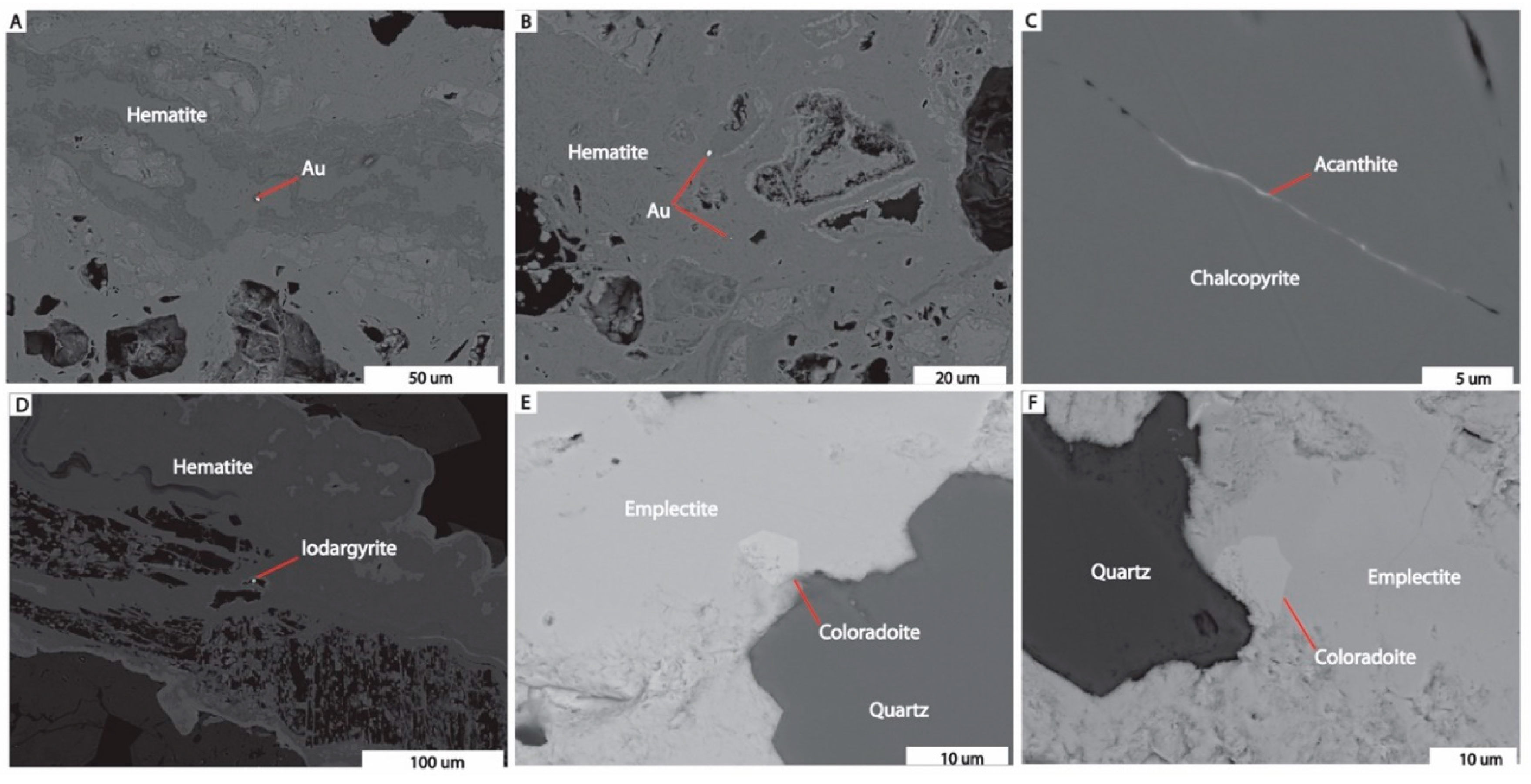
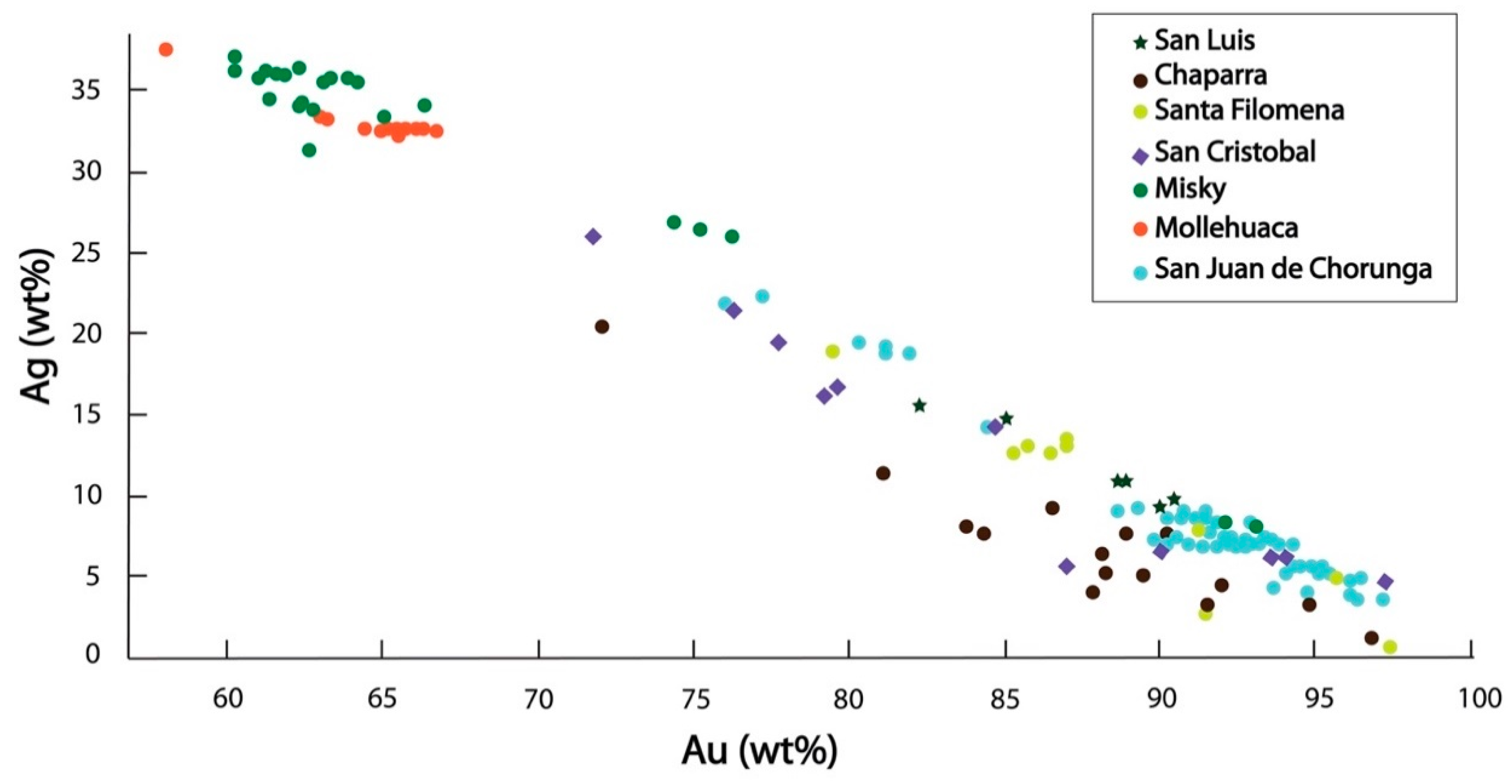
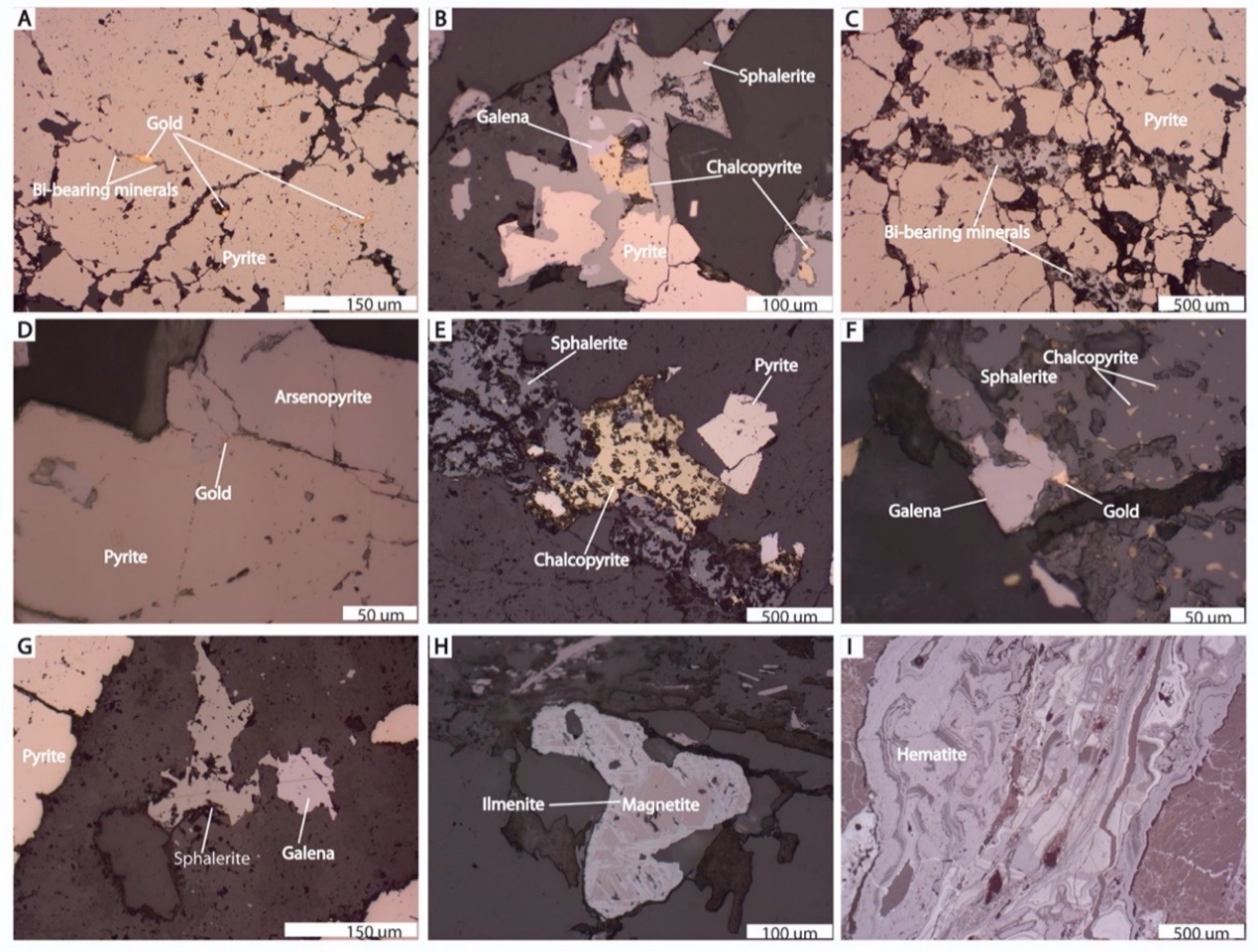
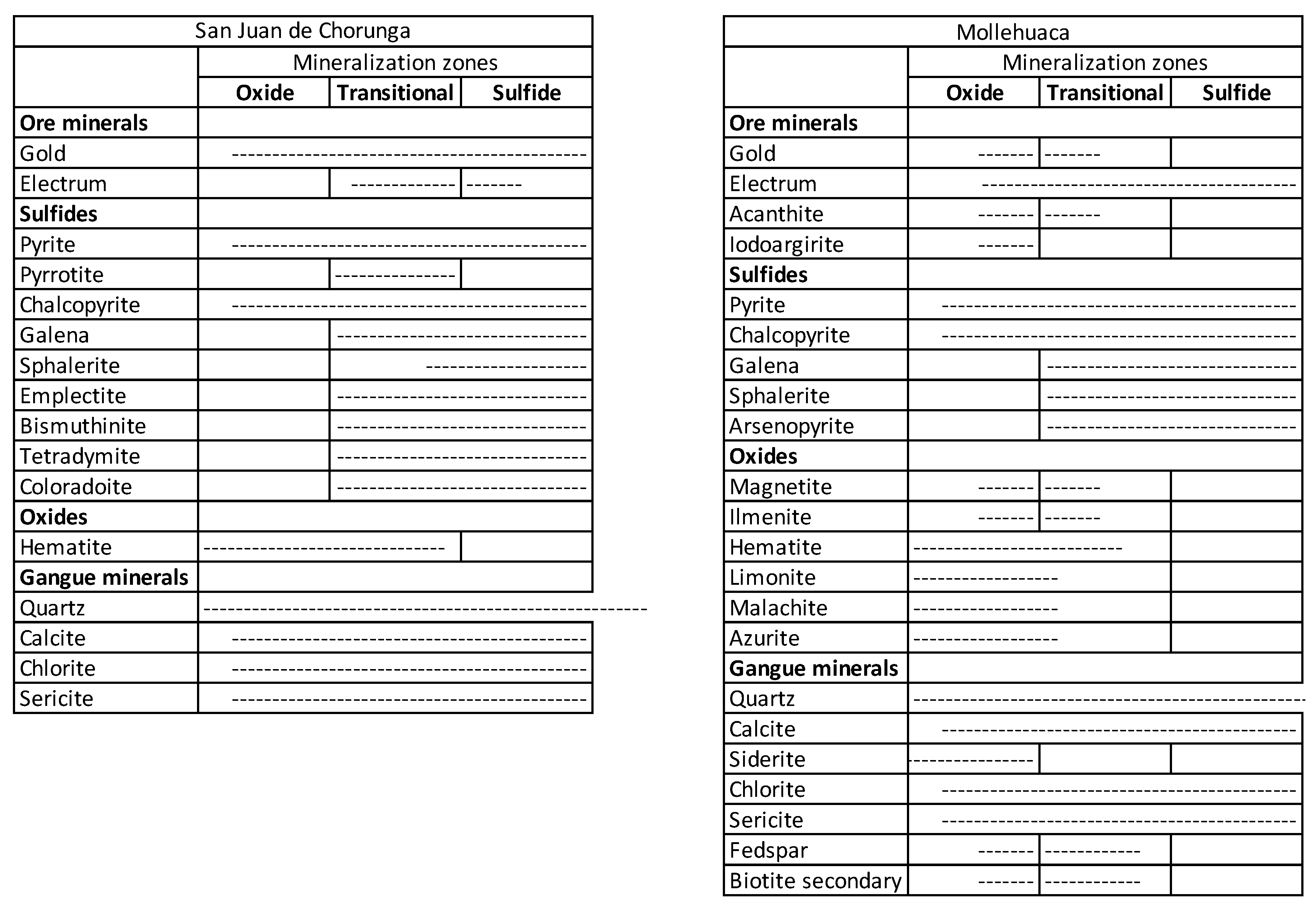
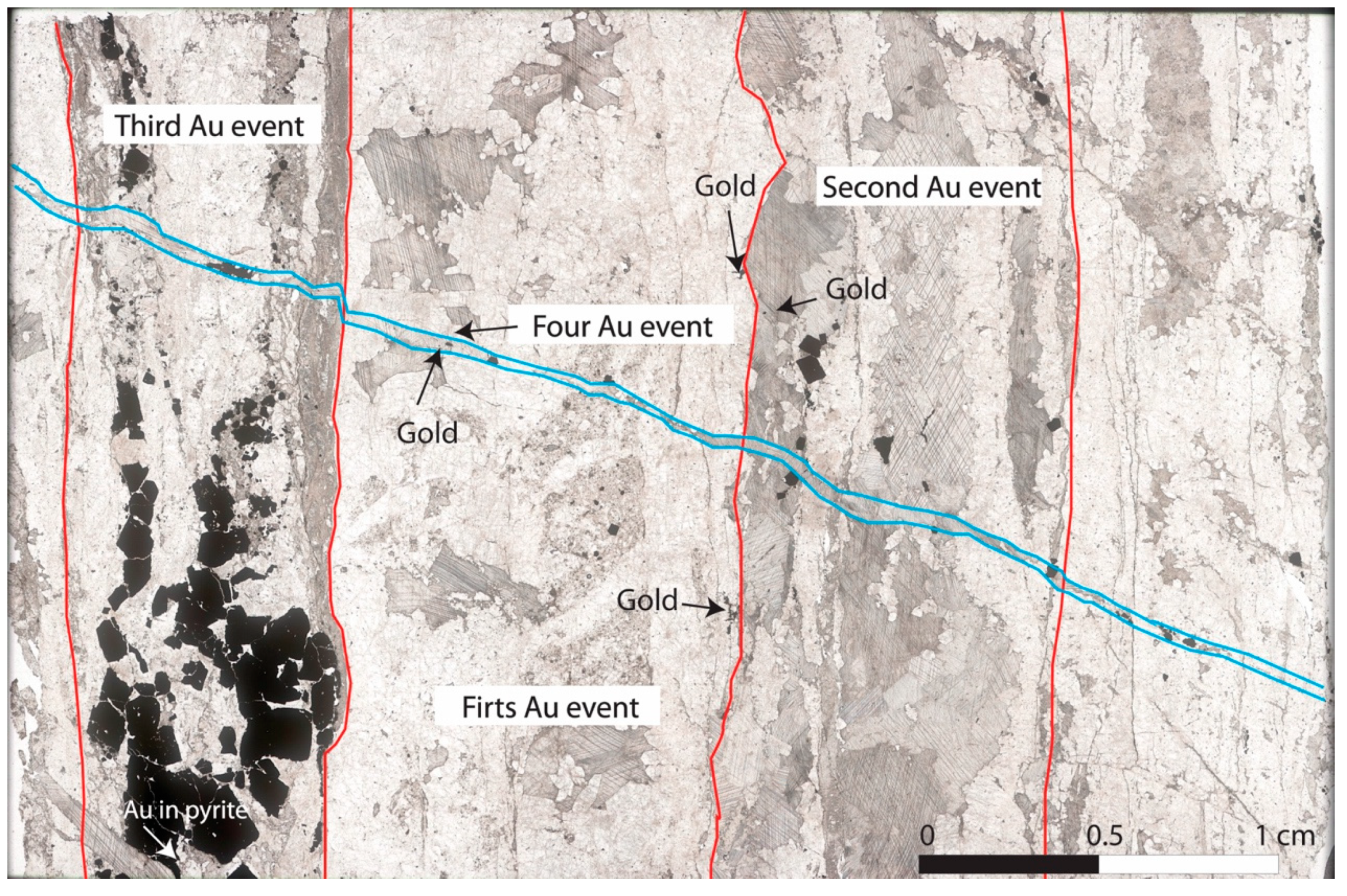
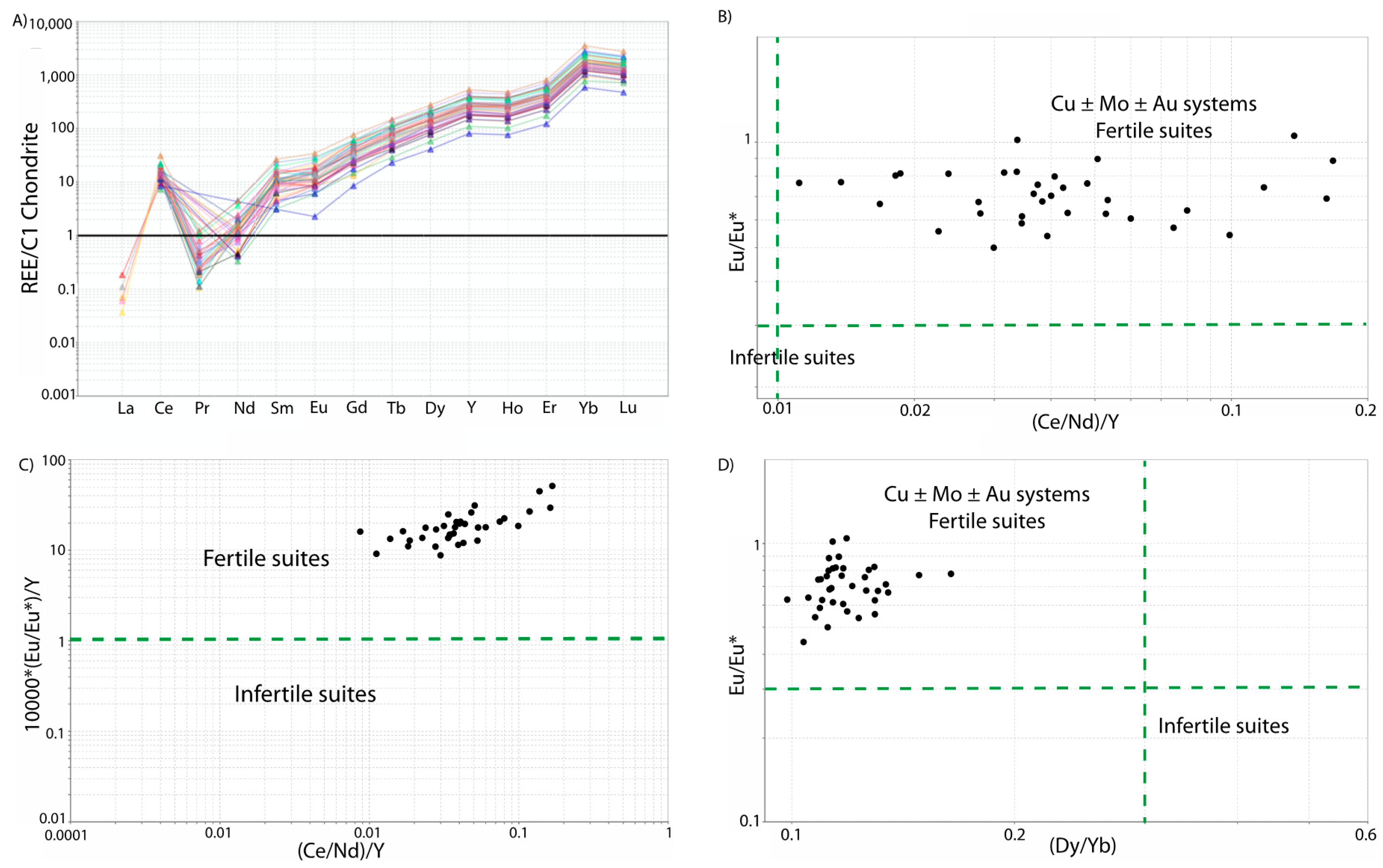
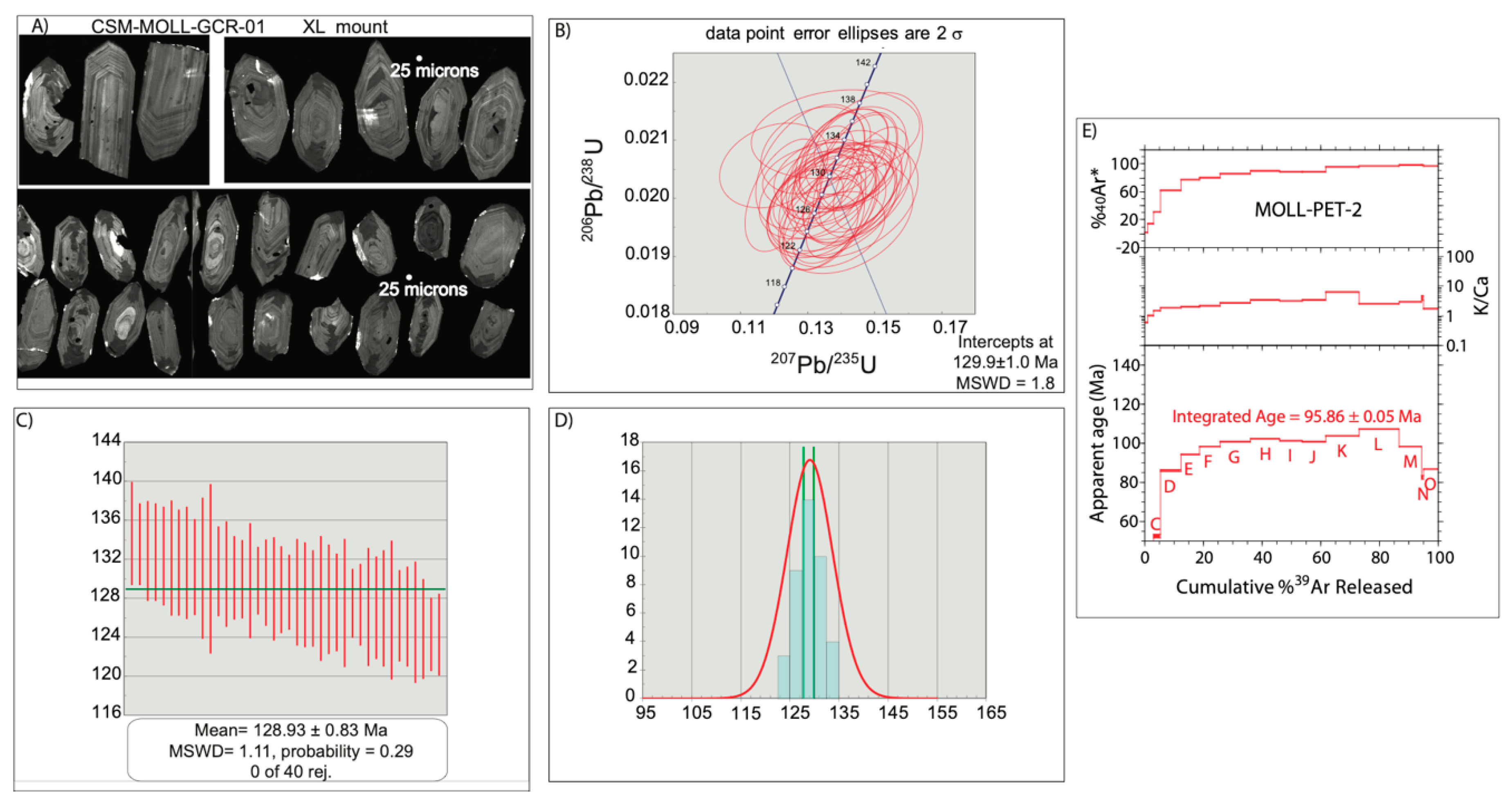
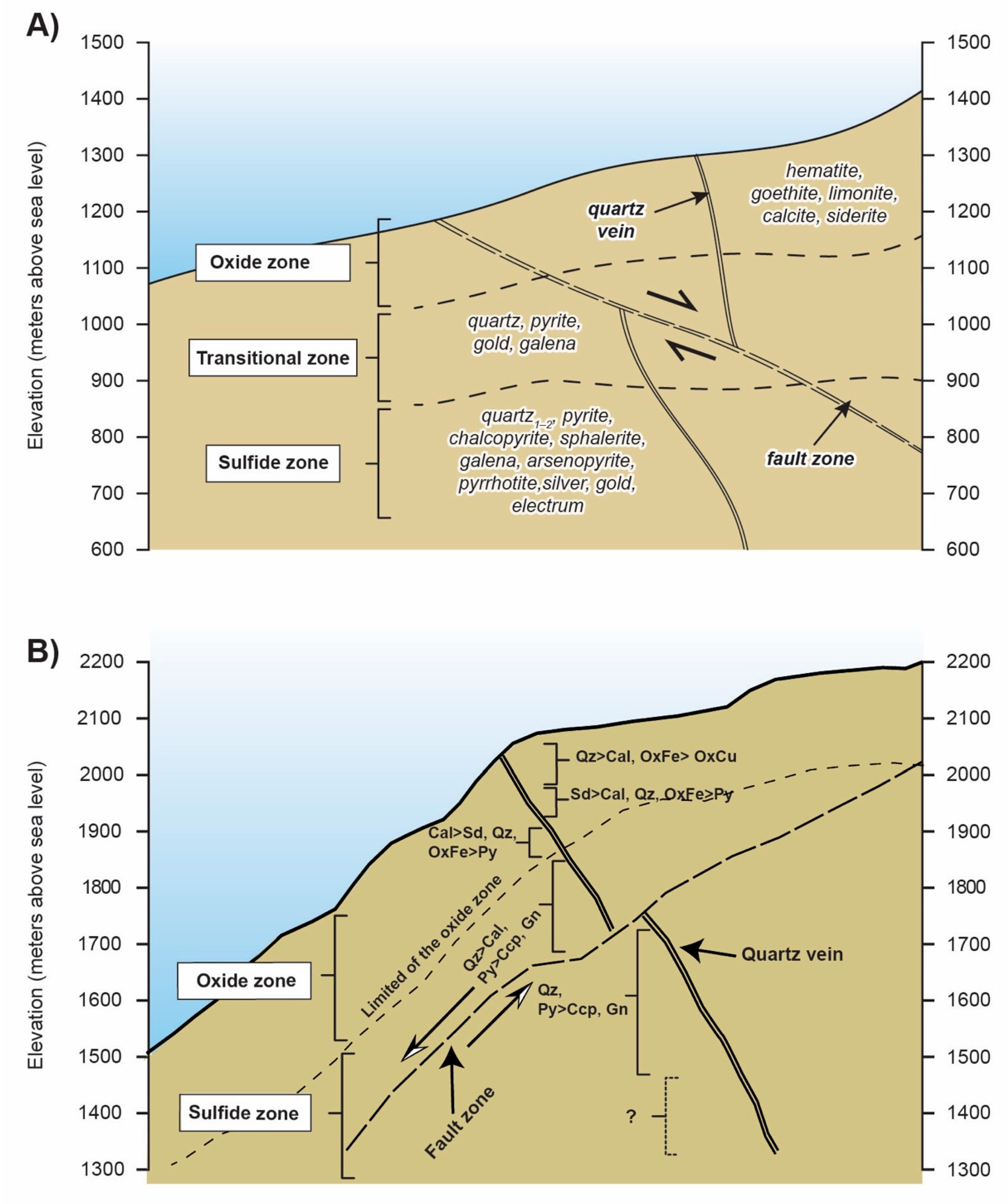
| Electrum | |||||||
| Au (wt%) | Ag (wt%) | Hg (wt%) | Fe (wt%) | S (wt%) | In (wt%) | Sn (wt%) | |
| Minimum | 58.04 | 14.33 | 0.49 | 0.05 | 0.04 | 0.04 | 0.03 |
| Maximum | 84.41 | 37.43 | 1.92 | 1.36 | 0.46 | 0.09 | 0.07 |
| Median | 65.94 | 32.36 | 1.06 | 0.20 | 0.12 | 0.06 | 0.05 |
| Average | 70.12 | 28.12 | 1.05 | 0.32 | 0.17 | 0.06 | 0.05 |
| Native Gold | |||||||
| Au (wt%) | Ag (wt%) | Hg (wt%) | Fe (wt%) | S (wt%) | In (wt%) | Sn (wt%) | |
| Minimum | 88.66 | 3.67 | 0.08 | 0.05 | 0.03 | 0.03 | 0.03 |
| Maximum | 97.14 | 9.16 | 3.40 | 1.86 | 2.02 | 0.10 | 0.07 |
| Median | 92.32 | 7.01 | 0.77 | 0.43 | 0.14 | 0.05 | 0.04 |
| Average | 92.63 | 6.94 | 1.05 | 0.52 | 0.25 | 0.05 | 0.05 |
| Correlation | Au | Bi | S | Hg | Ag | Sb | Cd | Pb | Zn | Te | Cu | Ni | In | Fe | As | Mo |
| Au | 1.0 | |||||||||||||||
| Bi | 1.0 | 1.0 | ||||||||||||||
| S | 1.0 | 1.0 | 1.0 | |||||||||||||
| Hg | 1.0 | 1.0 | 1.0 | 1.0 | ||||||||||||
| Ag | 1.0 | 1.0 | 1.0 | 1.0 | 1.0 | |||||||||||
| Sb | 1.0 | 1.0 | 1.0 | 1.0 | 1.0 | 1.0 | ||||||||||
| Cd | 1.0 | 1.0 | 1.0 | 1.0 | 1.0 | 1.0 | 1.0 | |||||||||
| Pb | 1.0 | 1.0 | 0.9 | 1.0 | 1.0 | 0.8 | 1.0 | 1.0 | ||||||||
| Zn | 0.8 | 0.8 | 0.7 | 0.8 | 0.9 | 1.0 | 0.9 | 1.0 | 1.0 | |||||||
| Te | 0.8 | 0.8 | 1.0 | 0.8 | 0.8 | 0.8 | 0.7 | 0.7 | 0.5 | 1.0 | ||||||
| Cu | 0.5 | 0.5 | 0.9 | 0.6 | 0.6 | 0.6 | 0.6 | 0.5 | 0.4 | 0.9 | 1.0 | |||||
| Ni | 0.3 | 0.2 | −0.1 | 0.2 | 0.3 | 0.2 | 0.4 | 0.4 | 0.6 | 0.1 | 0.4 | 1.0 | ||||
| In | 0.2 | 0.2 | 1.0 | 0.3 | 0.3 | 0.3 | 0.2 | 0.1 | 0.0 | 0.7 | 0.9 | −0.3 | 1.0 | |||
| Fe | 0.1 | 0.1 | 1.0 | 0.1 | 0.1 | 0.2 | 0.1 | 0.1 | 0.0 | 0.5 | 0.5 | −0.2 | 0.7 | 1.0 | ||
| As | −0.2 | −0.3 | −0.6 | −0.2 | −0.2 | −0.2 | −0.1 | 0.0 | 0.3 | −0.4 | −0.1 | 0.6 | −0.4 | 0.1 | 1.0 | |
| Mo | −0.3 | −0.3 | −0.7 | −0.2 | −0.2 | −0.2 | −0.3 | −0.3 | −0.3 | 0.2 | 0.3 | −0.3 | 0.6 | 0.9 | 0.1 | 1.0 |
| Element | Au | Hg | As | Cu | Pb | Co | Zn | Sb | Bi | Ag | Fe | S | Mo | Ni | Se | Li | Pd | Te | Cd |
|---|---|---|---|---|---|---|---|---|---|---|---|---|---|---|---|---|---|---|---|
| Unit | ppb | ppb | ppm | ppm | ppm | ppm | ppm | ppm | ppm | ppm | pct | pct | ppm | ppm | ppm | ppm | ppb | ppm | ppm |
| Count | 6 | 6 | 6 | 6 | 6 | 6 | 6 | 6 | 6 | 6 | 6 | 3 | 6 | 6 | 4 | 6 | 6 | 6 | 6 |
| Average | 292,84 | 1776 | 563 | 820 | 179 | 49.1 | 84.8 | 87.5 | 30.0 | 19.0 | 9.5 | 6.3 | 13.5 | 2.5 | 1.9 | 1.3 | 0.7 | 0.9 | 9.3 |
| Median | 7980 | 150 | 111 | 840 | 27.8 | 38.4 | 9.6 | 5.1 | 1.8 | 3.0 | 5.0 | 4.0 | 3.1 | 2.5 | 2.1 | 0.6 | 0.6 | 0.9 | 0.2 |
| Min | 21.0 | 10.0 | 73.4 | 15.9 | 0.7 | 19.5 | 2.3 | 0.8 | 0.1 | 0.9 | 0.4 | 3.0 | 1.6 | 1.1 | 0.4 | 0.4 | 0.2 | 0.1 | 0.0 |
| Max | 136,000 | 10,000 | 2220 | 1720 | 789 | 122 | 303 | 500 | 155 | 100 | 30 | 12 | 65.5 | 4.2 | 2.9 | 3.5 | 1.4 | 2.2 | 47.2 |
Publisher’s Note: MDPI stays neutral with regard to jurisdictional claims in published maps and institutional affiliations. |
© 2020 by the authors. Licensee MDPI, Basel, Switzerland. This article is an open access article distributed under the terms and conditions of the Creative Commons Attribution (CC BY) license (http://creativecommons.org/licenses/by/4.0/).
Share and Cite
Crespo, J.; Holley, E.; Pfaff, K.; Guillen, M.; Huamani, R. Ore Mineralogy, Trace Element Geochemistry and Geochronological Constraints at the Mollehuaca and San Juan de Chorunga Au-Ag Vein Deposits in the Nazca-Ocoña Metallogenic Belt, Arequipa, Peru. Minerals 2020, 10, 1112. https://doi.org/10.3390/min10121112
Crespo J, Holley E, Pfaff K, Guillen M, Huamani R. Ore Mineralogy, Trace Element Geochemistry and Geochronological Constraints at the Mollehuaca and San Juan de Chorunga Au-Ag Vein Deposits in the Nazca-Ocoña Metallogenic Belt, Arequipa, Peru. Minerals. 2020; 10(12):1112. https://doi.org/10.3390/min10121112
Chicago/Turabian StyleCrespo, Jorge, Elizabeth Holley, Katharina Pfaff, Madeleine Guillen, and Roberto Huamani. 2020. "Ore Mineralogy, Trace Element Geochemistry and Geochronological Constraints at the Mollehuaca and San Juan de Chorunga Au-Ag Vein Deposits in the Nazca-Ocoña Metallogenic Belt, Arequipa, Peru" Minerals 10, no. 12: 1112. https://doi.org/10.3390/min10121112
APA StyleCrespo, J., Holley, E., Pfaff, K., Guillen, M., & Huamani, R. (2020). Ore Mineralogy, Trace Element Geochemistry and Geochronological Constraints at the Mollehuaca and San Juan de Chorunga Au-Ag Vein Deposits in the Nazca-Ocoña Metallogenic Belt, Arequipa, Peru. Minerals, 10(12), 1112. https://doi.org/10.3390/min10121112






